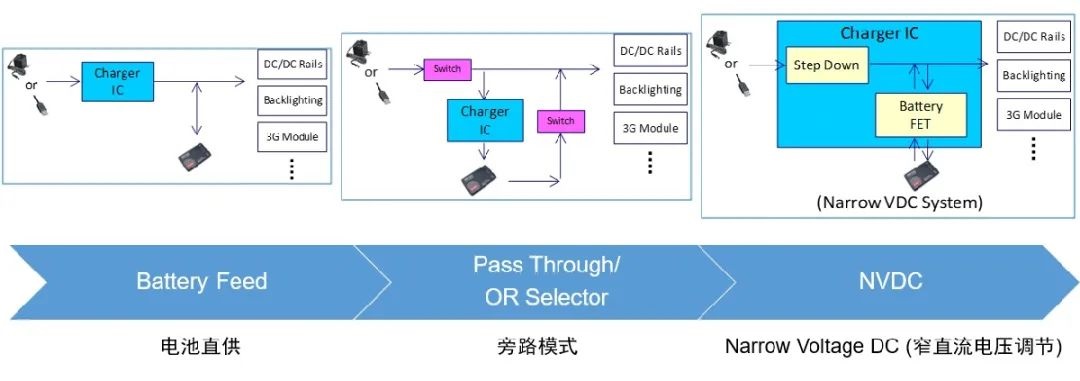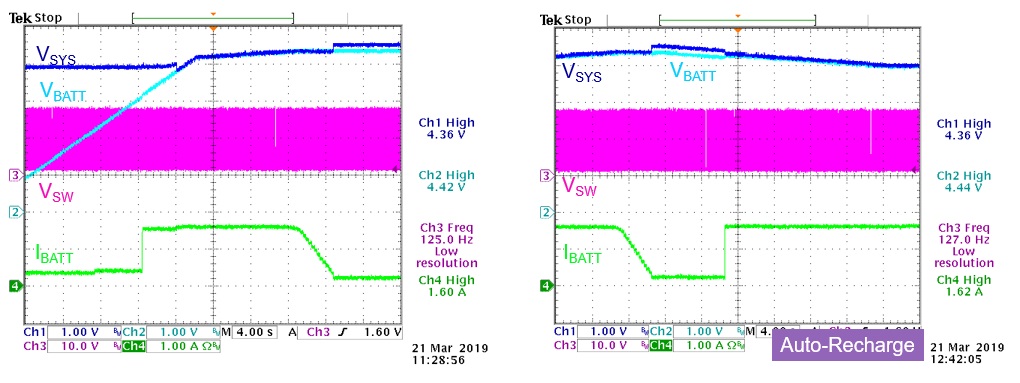How to correctly select the lithium battery charge management chip?
If you want to make better use of lithium-ion batteries and play its role more effectively, how to charge them more efficiently and stably has become particularly important. How to charge lithium-ion batteries better?
The following figure shows the charging curve of a typical lithium-ion battery:

The charging stage can be divided into the following five stages:
Trickle charge
precharge
Constant current charge
Constant voltage charging
Constant voltage charging
It seems that it is not so complicated, but there are so many lithium-ion battery applications, how can we choose the best charge management solution according to different applications?
In fact, we can consider and analyze from these four dimensions:


-
Most portable devices charge from a USB port, and there are several types
a). USB-A:
Typically 5V @ 1.5A is maximum, but can support fast charging and other standards up to 12V
b). USB-C:
5V@3A is the maximum, but this can be increased to 20V@5A if USB-PD is supported
-
If the device is charged via USB, it must always support 5V operation, which means the charger IC topology must be able to support this operation。
a). For example, for a 2s battery (Max Vbatt >= 8.4V), you need to use the boost or buck-boost topology
b). If the device is not charged from USB, then almost always a step-down topology can be used because the input voltage will always be higher than the battery voltage。
A major problem of the battery management IC is that it has more control loops, not only to manage the input (input voltage and input current regulation), but also to supply power to the system (system voltage regulation), at the same time, but also need to constantly monitor the temperature of the system, in order to achieve a balance between charging performance and thermal performance。

Charge management IC does not only have charge management function, but also shoulders the task of energy management. How to distribute the energy from the input to the battery to the system, which involves path management。
There are three path management methods based on different connection modes:

Among them, the third NVDC as a popular structure, its main advantages are:
-
Minimum system voltage regulation can be started instantaneously using a low-voltage battery
-
The system always follows the battery voltage to reduce the voltage stress on the components of the system。
-
When the input power is limited, the battery can be used as a supplement to the system。
-
The system can be disconnected from the battery to support transport mode
The NVDC Charger charging curve has a very important feature: it has narrow system voltage。

When the Battery voltage is relatively low, the system will be adjusted to the lowest operating point, and then the Battery FET will be used to trickle/pre-charge the battery. When the battery voltage reaches a threshold, the battery and the system will be connected together for quick charging. When the battery is full, the system will be a little higher to ensure the pressure difference。
Therefore, whether the battery is high or low, the system always has a minimum voltage, the maximum voltage is not too high, and there will be a relatively narrow system voltage。

Typical charge curve (operating conditions:VIN=16V, VBATT ramp from 0V, ICHG=1.84A, ISYS=1A)
All the ways of working are from the input to the system/input to the battery, in fact, the converter itself is often synchronous, for the power level, both can work forward, and can work in reverse, such as OTG or PD function, requires battery discharge to power other devices.
With the integration of these four dimensions, selection is not an issue when you have Buck topologies, applications that require NVDC path management, and OTG capabilities.
|
Disclaimer: This article is transferred from other platforms and does not represent the views and positions of this site. If there is any infringement or objection, please contact us to delete it. thank you! |











